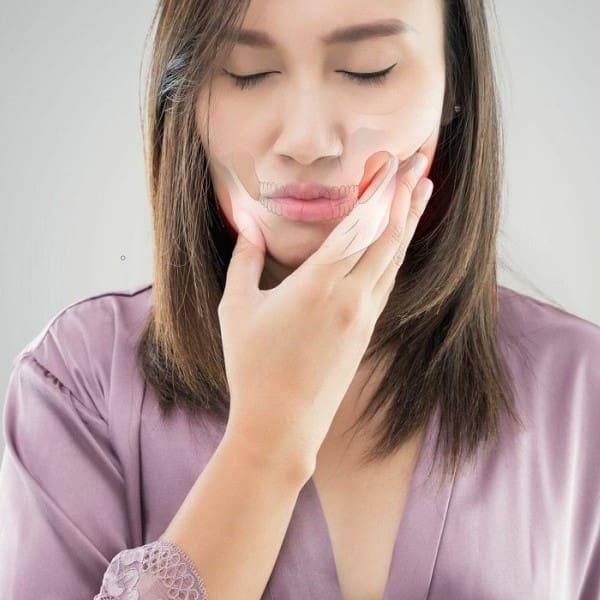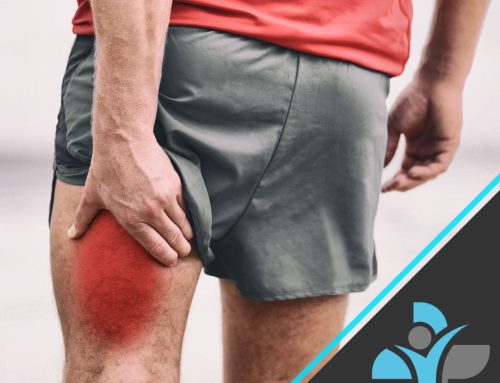
Overview
Temporomandibular disorders (TMD) are conditions which affect the movement of the jaw. They are sometimes referred to as TMJ disorder or TMJD. It can cause facial pain, tenderness and difficulty moving the joint. TMD is believed to affect up to 15% of adults, with peak incidence at 20 to 40 years of age, more commonly found in women. TMD is treatable, but can have many different causes which can make diagnosis a challenge. Once diagnosed most patients can be successfully treated at home using methods such as reducing stress and changing posture.
Anatomy
TMD refers to a group of disorders affecting the Temporomandibular Joint (TMJ).
This joint connects your lower jaw (mandible) to your skull. It is located bilaterally (on both sides of your head) just in front of your ears. The function of this joint is to open and close your mouth, allowing you to eat and speak.
The TMJ is a hinge joint which allows for precise and complex movements of the jaw.

Symptoms
The symptoms typically present, either on one or both sides of the face:
- Pain in the face or neck
- Limited jaw range of motion and/or locking of the joint
- Stiffness in the jaw muscles
- Clicking or popping from the TMJ area
- Malocclusion (a shift in jaw position)
Causes
There is no single specific cause for TMD, but some conditions are believed to contribute to developing a disorder. These include arthritis, joint erosion, clenching or grinding of the teeth, congenital structural jaw problems and trauma to the jaw. It is also thought that prolonged stress and poor posture which puts extra strain on the muscles of the face and neck are associated to the development of TMD.
Diagnosis
There is no standard test for TMD, you may be referred to an ENT specialist for a diagnosis. They may physically examine your jaw for swelling or tenderness and possibly carry out and X ray, CT scan or MRI to assess the structure of your jaw.
Treatment
Most TMD patients are treated conservatively, using pain medication, ice to reduce pain and swelling and reducing jaw movements by eating soft foods and avoiding chewing gum.
Many find that physiotherapy or sports massage therapy can support treatment for TMD. Your therapist can manipulate the muscles surrounding your jaw and neck, thereby relieving the tension in your TMJ. They can also provide you with exercises the stretch the muscles around your jaw, optimising joint movement. As stress and upper body posture is believed to be a contributing factor in TMD you may find that regular massage treatments can help you to manage your condition.
In extreme cases your GP or ENT specialist may advise corrective dental treatment if this bite alignment is an issue or arthrocentesis if fluid and debris needs to be cleared from the joint.
Exercises
There are many different exercises which can be used to help TMD. Your Physiotherapist or Sports Massage Therapist will be in a better position to advise which are best for you, but here are a few examples that they may ask you to carry out.
Goldfish Exercise:
Press your tongue to the roof of your mouth. Then place one index finger on your left TMJ and the other index finger on your chin. Apply light pressure on each finger, drop your chin so that your mouth opens, but tongue stays in contact with the roof of your mouth. Repeat with the right TMJ.
Chin Tucks:
Stand or sit tall then bring your head backwards, tucking your chin in towards your chest. Keep your head straight, it might help to focus on a point or object straight in front of you.
Jaw Stabilisation:
Keep your jaw in a neutral position and then partially open it, about the width of the top of your thumb. Apply gentle pressure with your hand, first on the left then right then at the bottom of your jaw. Resist the pressure to keep your jaw stationary.
Prevention
As TMD have no specific cause it can be difficult to prevent their occurrence. You may find it helpful to use a mouth guard at night or use muscle relaxants (under the supervision of your GP) if you are prone to teeth grinding. Physio or sports massage therapy can help to optimise your posture and avoid excess pressure on your TMJ. It is also advisable to reduce, or manage, stress levels and anxiety. This can be achieved through regular exercise, massage treatments, diet and counselling.



